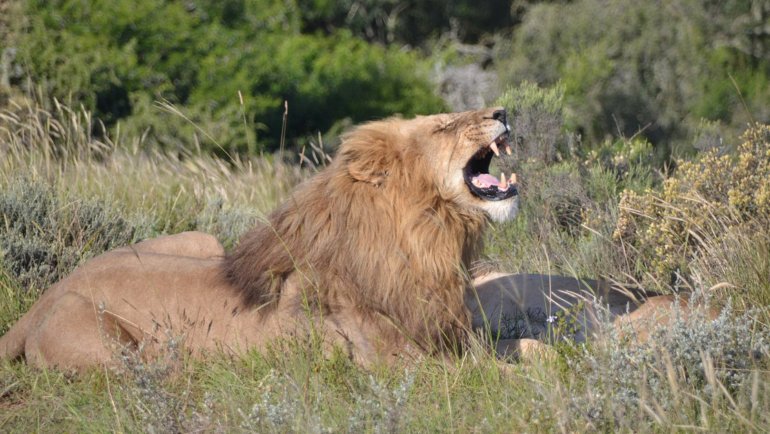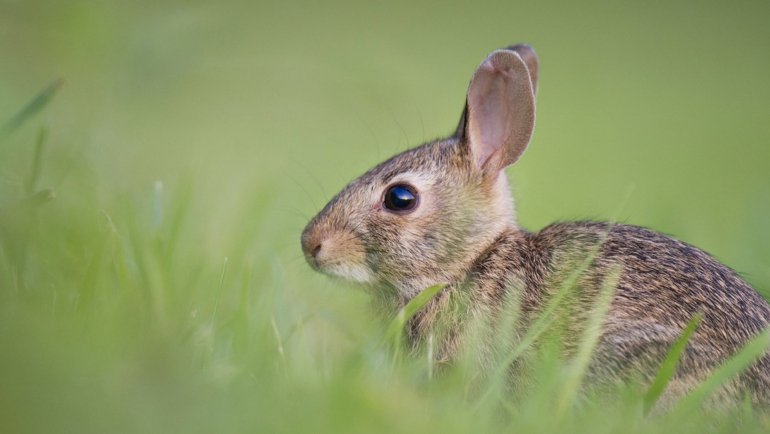Deer are ungulates, which means they have hooves. Since the ungulate comprises two orders, odd-toed and even-toed hooves, these mammals belong to the even-toed distinction.
In this article, I will explore all aspects of deer hooves and what you need to know about these remarkable appendages. Therefore, by the end of this informative piece, you’ll clearly understand the structure of deer hooves, their function, and how they differ from other ungulates.
What Are Hooves?
Hooves are hard, horny coverings that protect the toes of ungulate mammals. These structures are composed of a dense, keratin material that grows continuously like human nails.
Hooves are critical to the survival of these animals, as they provide support and stability for the animal’s weight and help them move across various types of terrain.
The shape and size of hooves can vary among species and are adapted to suit the animal’s specific needs and environment. In addition to their functional importance, they can play a role in communication and mating behaviors for some species.
Do Deer Have Hooves?
Yes, deer have hooves. They are split into two sections, or “toes.” Each unit is called a “digit,” In the case of deer, the two digits are referred to as ‘dewclaws.’
The hooves are essential for providing support and traction when running and defending themselves against predators.
Deer Hooves or “Feet” – Interesting Facts
These structures are essential to the survival and well-being of these graceful animals. Here are interesting deer hooves facts:
- Deer hooves are specially adapted for their lifestyle. Their cloven structure allows deer to move quickly and easily over various terrains, such as rocky hillsides and muddy fields.
- Deer hooves grow continuously throughout their life, and they wear down naturally as the deer moves around. It means that the animal doesn’t need to have the hooves trimmed like horses or other domesticated animals.
- The bottom of a deer’s hoof is covered in a thick, rubbery pad that helps absorb shock and provides traction. This pad is called the “sole.”
- Deer hooves are an essential source of information for wildlife biologists. By examining the hooves’ wear patterns and growth rate, biologists can determine the deer’s age, sex, and overall health.
- In the winter, the hooves grow longer and thicker to provide better insulation against the cold and snow. It helps them move more easily through deep snow.
- The bucks use their hooves to mark their territory during the breeding season. They scrape the ground with these structures to create a shallow depression called a “scrape,” which they will then urinate in to leave their scent behind.

What Are The Uses of Hooves?
Hooves are versatile structures that serve many functions for animals. Here are some of their uses:
- Mobility: They provide a solid and stable base for animals to walk, run, and jump on. The shape and structure of the hooves allow for efficient movement over different types of terrain.
- Traction/Balancing: Hooves provide excellent traction, particularly on slippery or uneven surfaces. The rough texture of these structures helps animals grip the ground and maintain their balance.
- Defense: Animals like deer and horses can use their hooves to strike out and kick predators that threaten them.
- Communication: The structures can be used to communicate with other animals. Deer, for example, will scrape the ground with their hooves to create a “scrape” to communicate with other deer during the breeding season.
They also have crucial glands located between their hooves called interdigital scent glands. These sacs are filled with sebum, a yellowish substance that releases a unique scent.
Therefore, whenever a deer moves, its scent is left behind in its footsteps. It’s an effective communication tool as it enables deer of the same herd to locate one another and stay close together.
- Support: Hooves provide support for the weight of the animal. Their shape and structure are designed to distribute the animal’s weight evenly.
- Thermoregulation: In cold climates, deer and moose will grow thicker and longer hooves in the winter to provide insulation against the cold ground and snow.
Which Animals Have Hooves?
Ungulates is a scientific term derived from the Latin word ‘ungula,’ which means “hoof” or “toenail.” It is therefore used to refer to mammals with hooves. This order is divided into two:
- Odd-toed Ungulates (Perissodactyla) – These are animals with one or three toes on each limb. Examples of such species include; donkeys, horses, rhinoceroses, zebras, and tapirs.
- Even-toed Ungulates (Artiodactyla) – They have two or four toes on each leg. They include; deer, pigs, sheep, antelopes, giraffes, cattle, camels, goats, and hippopotamuses.

Why Do Animals Have Hooves?
Here are some of the main reasons why animals have hooves:
- Protection: Hooves provide a hard, protective covering for the bones and soft tissues of an animal’s foot, which helps to prevent injury and damage from rough or uneven terrain. In some cases, they may also serve as a defensive weapon, allowing animals to fend off predators or other threats.
- Balance: It helps maintain the animal’s balance and stability while running or moving across uneven surfaces. Many hooves’ wide, flat shape helps distribute weight evenly over a larger surface area, reducing the risk of injury and improving balance.
- Mobility: They provide traction and grip, essential for many animals to move quickly and efficiently through their environments. The hard, keratinized surface allows animals to maintain a firm grip on rocks, ice, or other slippery surfaces.
Buck Tracks vs. Doe Tracks
Various factors, such as size, shape, and behavior, can differentiate buck and doe tracks. Here are some general differences between the two:
- Size: Buck tracks are generally larger than doe tracks, as males are typically bigger and heavier than females.
- Shape: Buck tracks tend to be more pointed and elongated than doe tracks. It is because the male deer’s hooves are often longer and narrower than the female deer’s.
- Stride: Bucks tend to have a longer stride than does, so their tracks may be spaced farther apart.
- Behavior: During the rutting season, bucks are more likely to be active during the day and move around more frequently, which can result in more visible tracks. On the other hand, does tend to be more cautious and may move around less during this time.

Wild Boar Tracks vs. Deer Tracks
Wild boar tracks and deer tracks can be differentiated by a few key factors, which include:
- Shape: Wild boar tracks are usually more rounded than deer tracks. Boar tracks tend to be more symmetrical with a round toe compared to deer tracks.
- Toes: Wild boars have a wider space between their toes than deer, and their toes are more splayed outwards.
- Claws: Wild boars have sharper and more prominent claws compared to deer, which are duller and less visible.
- Pattern: Wild boars have a distinct pattern in their tracks. They usually walk with their front hooves pointing outwards and their hind hooves pointing inwards, so their tracks are more diagonal and less parallel than deer tracks.
- Size: Adult wild boars are usually larger than deer, and their tracks reflect this difference in size.
Frequently Asked Questions
Are Deer Hooves Sharp?
Yes, deer hooves are sharp and tough. This feature enables them to fight more effectively, in addition to helping the animals maintain a firm grip and grasp the ground under them.
However, as deer age, the outer edges of their hooves gradually become worn down from extended use. Although this factor makes them somewhat blunt, it’s essential to note that they are still sharp enough to cause significant harm to their perceived enemies.
Do Deer Have Cloven Hooves?
Deer have cloven hooves. The cloven structure of deer hooves allows them to move easily through their environments and helps distribute their weight evenly over a wide surface area, reducing the pressure on their feet.
Do Deer Have Ankles?
Yes, deer have two sets of ankles – one on each leg – and they are essential for their overall mobility and ability to move quickly and efficiently through their environment.
Their ankle joint is located above the hoof and connects the lower leg bone to the foot bones. It helps the mammal absorb shock and distribute its body weight evenly across the foot, reducing the risk of injury to the deer’s legs.
Final Thoughts
Deer hooves are a vital adaptation that allows these animals to navigate uneven terrain, maintain balance, and move quickly and efficiently through their environment. Overall, understanding deer hooves and their anatomy can help us appreciate these fascinating animals and their remarkable adaptations for survival.
Top featured image: Wikimedia Commons


